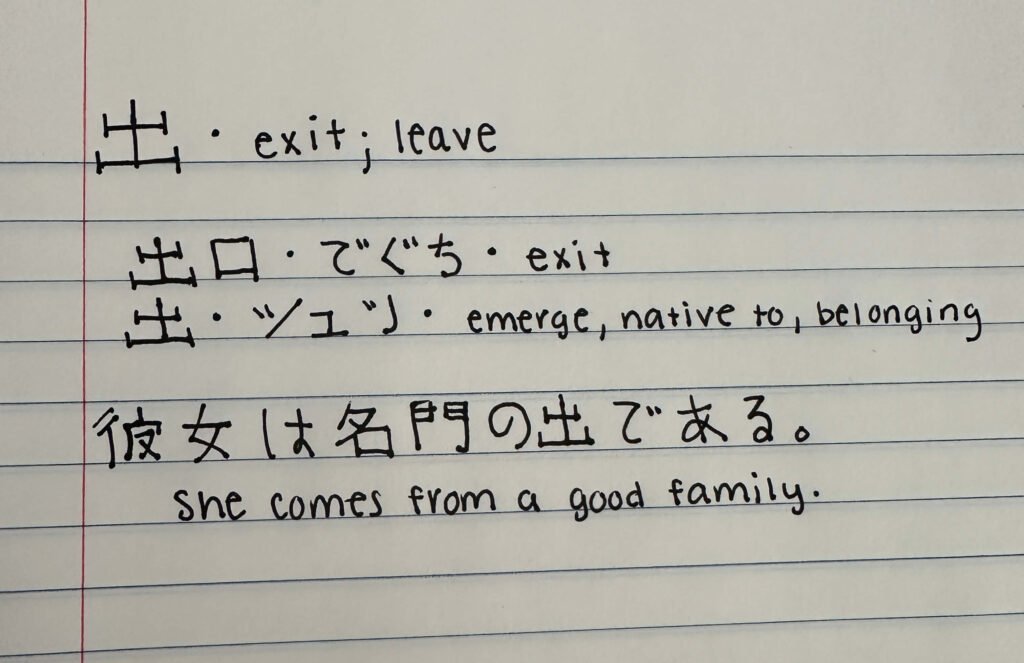If you’re learning Japanese, you’ve probably come across Kanji. In this article, we’ll go over what exactly a Kanji is and how to read them.
What are Kanji?
The Japanese writing system is made up of three “alphabets”. Hiragana, Katakana, and Kanji. Hiragana and Katakana are collectively referred to as “Kana”. They are phonetic and a pre-req for learning Kanji. If you don’t know those, here are a couple resources.
Use Learn the Kana to see all the characters and read the special rules.
Practice what you learned with the Kana Pro mini game. It’s free and doesn’t require a login.
Kanji are the borrowed Chinese characters that are used along with Kana. To read Japanese fluently, you need to know about 2,000 characters. Japanese kids spend much of their school years learning all of these characters, and it’s no simple task. That being said, don’t let that discourage you! With just a little practice each day, you will eventually learn all of them.
Strokes Versus Radicals
It can be tiresome to memorize all of the individual strokes each time you learn a new character. It would be like trying to memorize each word in English, without knowing what letters make up the word. Luckily, it’s easier to memorize characters than you think because of radicals.
Radicals are the smaller characters that make up larger ones. You can memorize these individually (they are also their own characters) and you will be able to recognize when they make up another character. Radicals are often their own kanji as well, so you will come across them individually anyway.
Strokes refer to the number of brushstrokes you would make to write a character. Some parts of a character might just be a stroke, and not necessarily a radical.
To see what the most common radicals are, I suggest this guide from Kanshudo.
Meanings
Kanji can have two or more meanings and readings. Meaning is the definition, and reading is how it is said. There are two categories, Onyomi (Chinese reading) and Kunyomi (Japanese reading). The only difference between these is their origin. Onyomi are derived from Chinese pronunciations and Kunyomi are original Japanese words.
One character often has multiple readings. You’ll really only know which is which by the context. For example, some Kanji will require some kana characters next to it. If you know the word, you’ll know which pronunciation of the character to use. When a character is by itself, it is usually the Onyomi.
Characters can also be combined or put next to each other to have yet another reading. When you learn a character, it’s best to memorize at least two readings and then tack on others as you review them. (In my opinion)
N Levels
Japanese proficiency tests are measure by “N” levels. The easiest is N5 and the hardest is N1. The reason you want to know this is – you can look up Kanji by their difficulty level. Sometimes these levels don’t make much sense in that, the Kanji at lower levels may not make practical words or are frequently used.
When creating your study plan, I recommend you use both N levels to guide you and practical lists. You can choose one or the other, it’s up to you. Of course if you plan on taking an actual proficiency exam, then you’ll want to stick to the “N” lists.
JLPT Sensei has a list ordered by frequency of use
Yoshida Institute has lists by level (and show you how to write each character!)
JLPT Study has a bunch of readings you can look at for each Kanji (up to N2)
You can use an online dictionary to copy/paste a character to see additional meanings
How to learn Kanji – Study Plan
Ok, so how to tackle all of this info? Do you start learning radicals? Do you start learning by frequency?
Learn however you’d like, but here is my recommendation. I would start with the N5 list to learn some of the most basic Kanji. I would try to learn 5 a day, with at least two readings. I would practice by writing the Kanji along with the words you choose to learn with them.
Let’s look at an example.
Let’s say I want to learn this character: 出
I see the general meaning is exit or to leave. It has multiple On readings: シュツ/スイand Kun readings: で(る)/だ(す)
I’ll pick two to learn right now.
で is one of the Kun readings, and makes up a very important word. Exit! (Frequently seen on signs)
It’s written 出口 and pronounced でぐち.
There is another Kanji here! If you already know it, then great. You already know how to read it OR you just learned a new reading for it. If you don’t know it, don’t worry. We know that 出 is just で, so the rest we can write in kana for our notes. Write the Kanji too as a side note, and as you learn more you can write the words properly.
Do the same with an On reading.
Looks like 出 is usually シュツ when alone. (You can see this from looking it up in the dictionary I linked.) It has a couple different meanings, such as “being native to a place” or “emerging from somewhere.”
If you have some extra time, look up the words in a sentence dictionary. That way you can see them in action. Check out Tangorin.

Great, now you learned two readings and two words! On to the next.
As you go through this process, it should take you a little over 2 weeks. You might need to spend some more time on Kanji such as the one in the example, since it has so many readings and potential words. As you go through them, reference the radical list and try to notice what each character is made up of. You’ll naturally learn the radicals this way.
After this, you can choose whether to tackle the frequency list or go up a level to N4. It depends on whether your goal is to just learn Kanji or to learn words you might see/use. I would use the same method and work through the list.
Give yourself breaks. 5 characters a day may not be realistic for some people. In that case, try to learn one character a day. Especially as the characters get more complex and have more readings, you might need to slow down.
